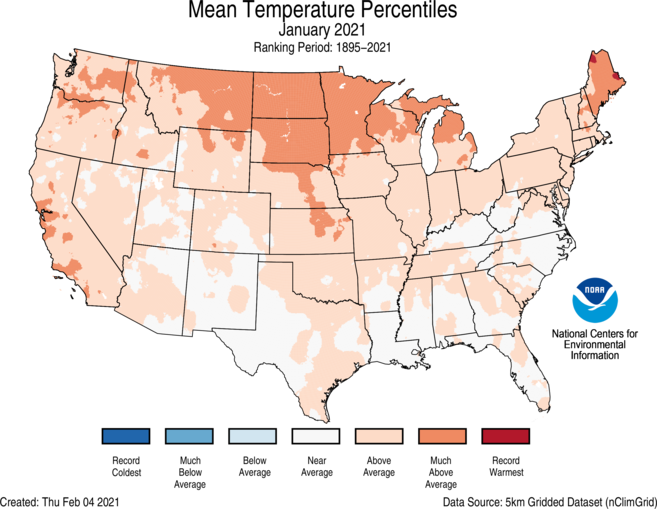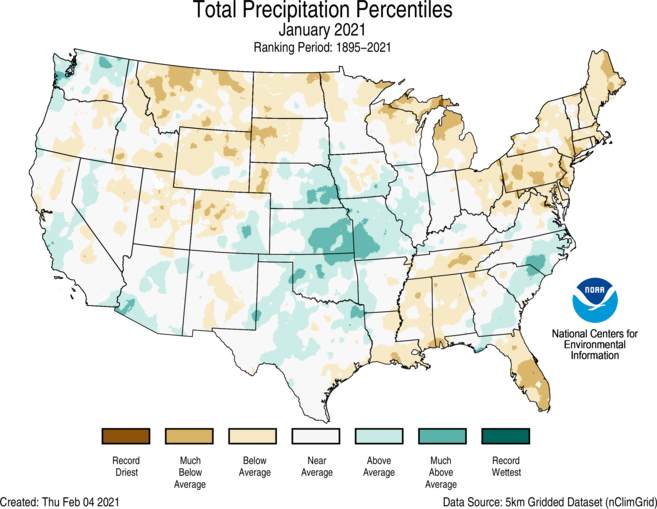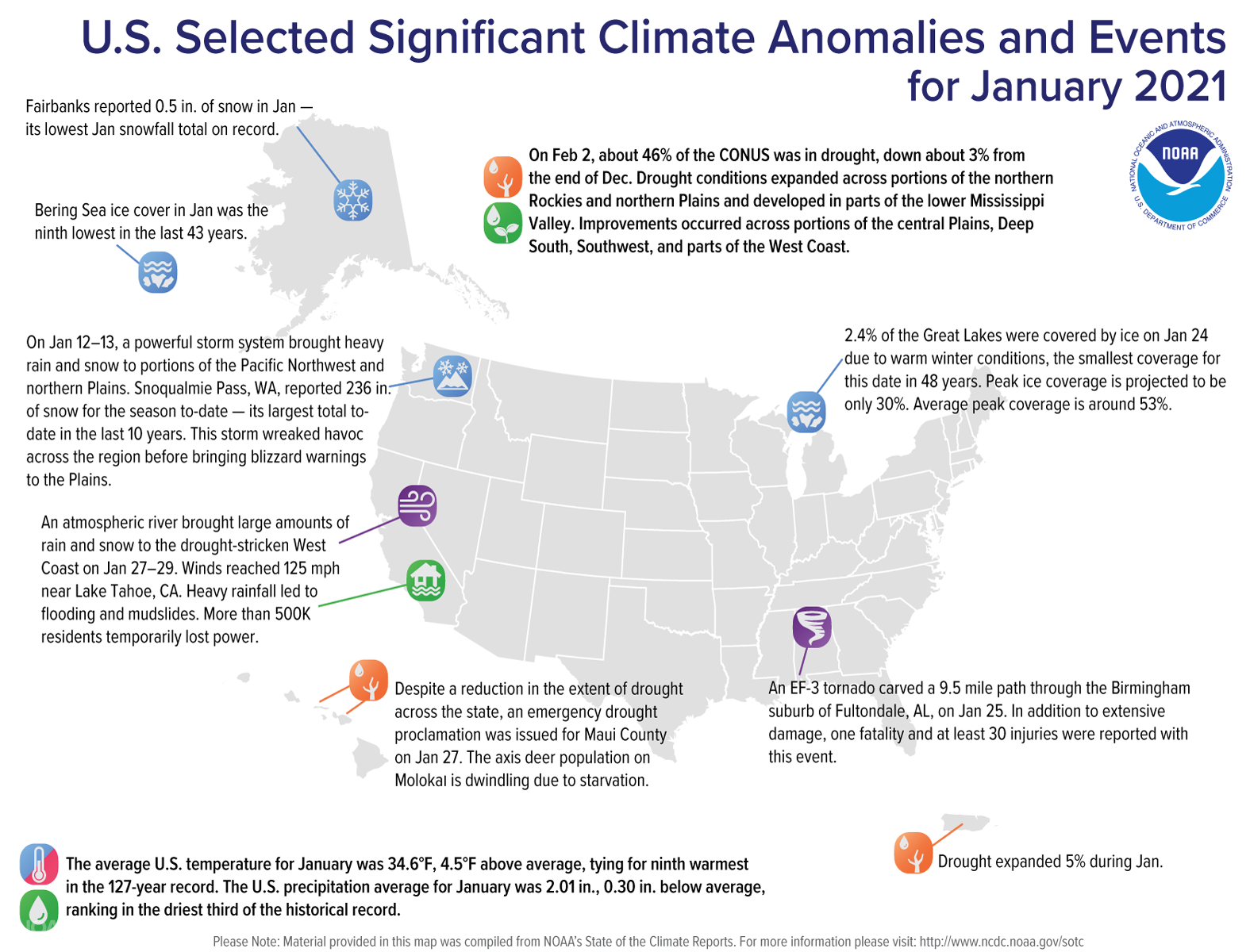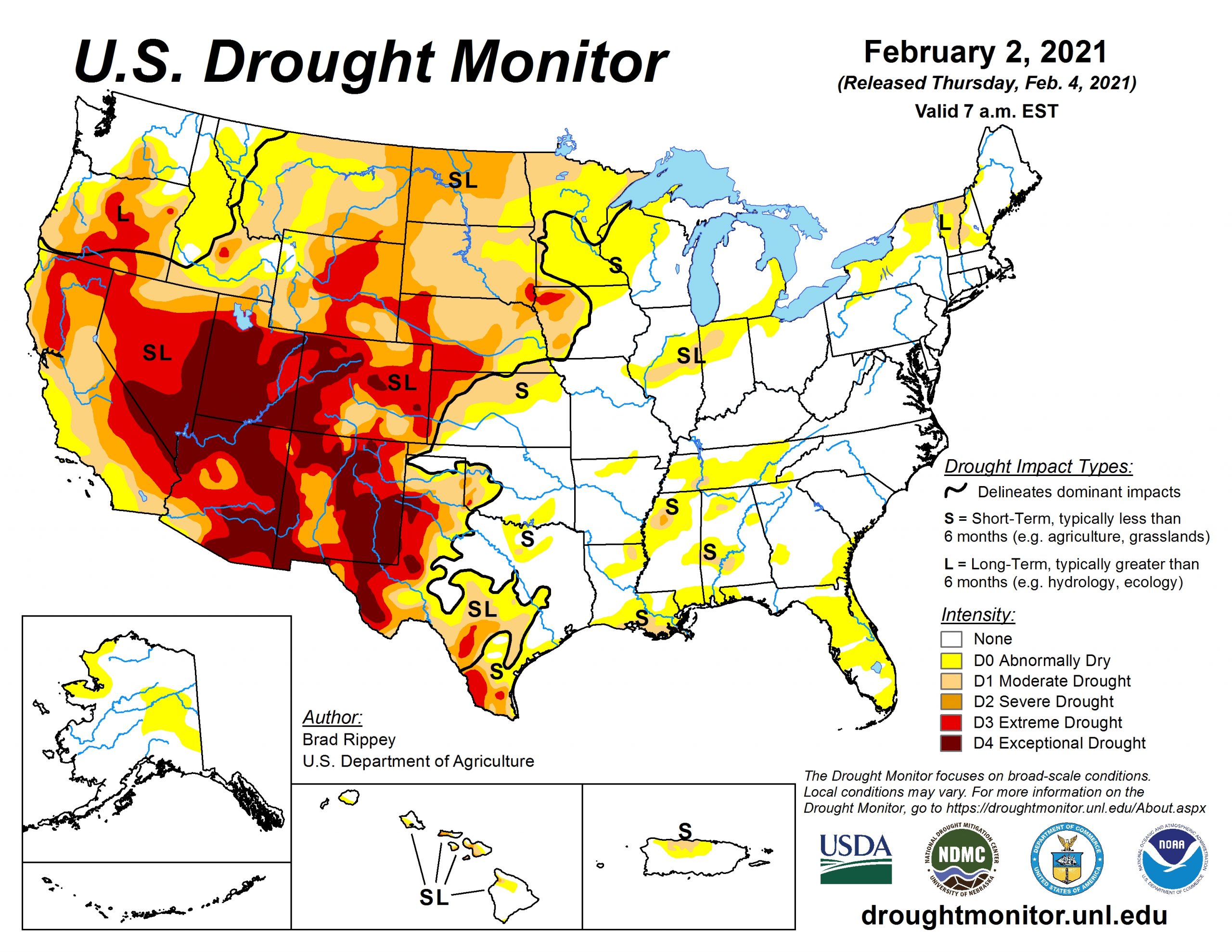January Recap - Warm and Dry for Most of the Nation
This winter’s mild temperatures also brought scant ice coverage to the Great Lakes in January, according to scientists at NOAA’s National Centers for Environmental Information. Here are more highlights from NOAA’s latest monthly U.S. climate report:
Climate by the numbers
January 2021 temperature and precipitation

The average January temperature across the contiguous U.S. was 34.6 degrees F (4.5 degrees above the 20th-century average), which tied with 1923 for ninth-warmest January in the 127-year record.
Above-average temperatures covered much of the West, northern and central Plains, Great Lakes and Northeast. North Dakota and South Dakota had their third- and fifth-warmest Januarys on record, respectively.
January precipitation for the contiguous U.S. was 2.01 inches (0.30 of an inch below average), which placed the month among the driest third of the record.
Below-average precipitation occurred across much of the Rockies, Northern Tier, Great Lakes, parts of the South and the Northeast. Meanwhile, portions of the West Coast, central and southern Plains, and parts of the Southeast had above-average precipitation.

Great Lakes ice cover
Only 2.4% of the entire Great Lakes surface was covered by ice on January 24, the smallest amount of coverage on this date in the past 48 years.
Peak ice coverage is expected to span only 30% of the surface sometime between mid-February and early March 2021. The amount of ice covering the Lakes during the peak is usually around 53%.

More notable climate events for the month
-
Alaska was quite mild: January’s average temperature was 11.0 degrees F, 8.8 degrees warmer than average, making it the warmest January for Alaska since 2016 and 13th warmest overall. Warm temperatures also contributed to the ninth-lowest Bering Sea ice extent for January observed in the last 43 years.
-
Drought improved, but just marginally: According to the U.S. Drought Monitor, approximately 45.8% of the contiguous U.S. was in drought by the end of January, just 3% less than at the end of December 2020. Improvements occurred across portions of the central Plains, Deep South, Southwest and parts of the West Coast. Hawaii also saw a 7% reduction in its drought.
 Edited for WeatherNation by Mace Michaels
Edited for WeatherNation by Mace Michaels